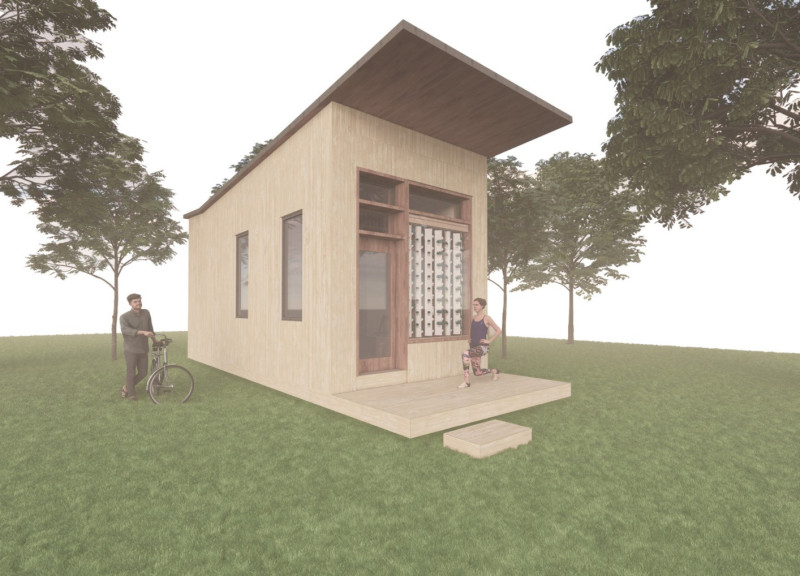5 key facts about this project
The Straw Bale Microhome offers a thoughtful response to the challenges urban living faces today. Designed for affordability and sustainability, the microhome utilizes innovative methods to maximize limited space. It is situated in an urban environment where efficient design is increasingly necessary. The overall concept focuses on creating a functional living area while maintaining a commitment to environmental care.
Design Strategy
The layout prioritizes efficient use of space and flexibility. The kitchen and bathroom areas are elevated to provide storage for crucial utilities, including water tanks and solar batteries. This design choice maximizes the available floor space while keeping necessary elements accessible. The bed incorporates a dual function, serving both as a sleeping area and a couch, enhancing the home's adaptability. Fold-away tables and chairs allow for easy rearrangement, ensuring that living arrangements can change with the users' needs.
Material Choice
Locally sourced materials play a key role in the construction of the microhome. Modcell panels and straw bales are used to create a lightweight and durable structure. Choosing these materials helps reduce transportation emissions and supports the local economy. The approach demonstrates a commitment to sustainability without compromising quality or performance.
Energy Considerations
The orientation of the microhome is carefully considered to face south, maximizing solar gains during colder months. This positioning helps to lower reliance on heating systems, contributing to energy efficiency. A hydroponics system is integrated within the south-facing glazed facade, serving as both a thermal buffer and a means of growing food on-site, which supports sustainable living.
Living Environment
The microhome illustrates the potential for integrating sustainable practices into daily life. By making food cultivation accessible, it encourages self-sufficiency and a closer connection to resources. Careful attention to detail and the integration of flexible elements create a practical space that meets modern living requirements. Each aspect of the design reflects a thoughtful consideration of how space can function better in the context of urban environments.



















































